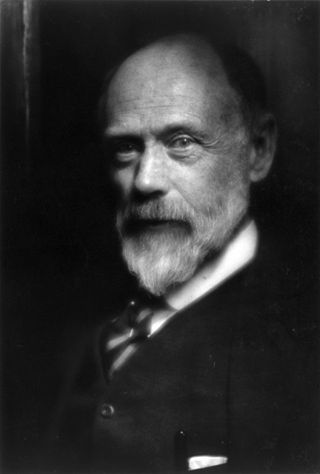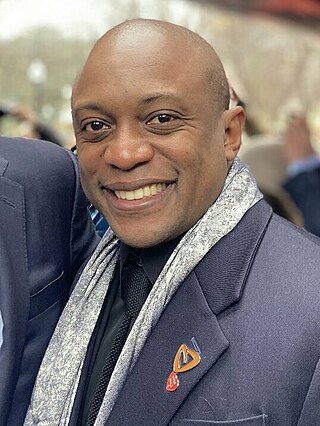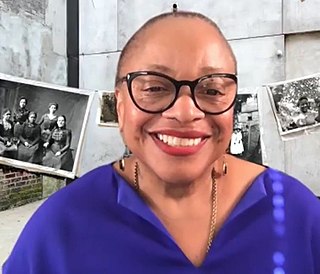
The George Washington University is a private federally-chartered research university in Washington, D.C. Originally named Columbian College, it was chartered in 1821 by the United States Congress and is the first university founded under Washington D.C.'s jurisdiction. It is one of nation's six federally chartered universities.

Johnson State College was a public liberal arts college in Johnson, Vermont. Founded in 1828 by John Chesamore, in 2018 Johnson State College was merged with the former Lyndon State College to create Northern Vermont University. In July 2023, Castleton University, Northern Vermont University-Johnson, Northern Vermont University-Lyndon, and Vermont Technical College merged to become Vermont State University.
The Maryland Institute College of Art (MICA) is a private art and design college in Baltimore, Maryland. Founded in 1826 as the Maryland Institute for the Promotion of the Mechanic Arts, it is regarded as one of the oldest art colleges in the United States.

Samuel Herbert Adams was an American sculptor.

David C. Driskell was an American artist, scholar and curator; recognized for his work in establishing African-American Art as a distinct field of study. In his lifetime, Driskell was cited as one of the world's leading authorities on the subject of African-American Art. Driskell held the title of Distinguished University Professor of Art, Emeritus, at the University of Maryland, College Park. The David C. Driskell Center at the University of Maryland, is named in his honor.
Melvin "Mel" Edwards is an American artist, teacher, and abstract steel-metal sculptor. Additionally he has worked in drawing and printmaking. His artwork has political content often referencing African-American history, as well as the exploration of themes within slavery. Visually his works are characterized by the use of straight-edged triangular and rectilinear forms in metal. He lives between Upstate New York and in Plainfield, New Jersey.
Williams is the first African American artist to be featured in The Janson History Of Art.
Lowell Blair Nesbitt was an American painter, draughtsman, printmaker, and sculptor. He served as the official artist for the NASA Apollo 9, and Apollo 13 space missions; in 1976 the United States Navy commissioned him to paint a mural in the administration building on Treasure Island spanning 26 feet x 251 feet, then the largest mural in the United States; and in 1980 the United States Postal Service honored Lowell Nesbitt by issuing four postage stamps depicting his paintings.

Ella Sophonisba Hergesheimer was an American illustrator, painter, and printmaker who painted and illustrated Tennessee society, including the state's women and children. As a printmaker, she pioneered the white-line woodcut.

Hank Willis Thomas is an American conceptual artist. Based in Brooklyn, New York, he works primarily with themes related to identity, history, and popular culture.

Deborah Willis is a contemporary African-American artist, photographer, curator of photography, photographic historian, author, and educator. Among her awards and honors, she is a 2000 MacArthur Fellow. She is currently Professor and Chair of the Department of Photography and Imaging at Tisch School of the Arts of New York University. In 2024, she was elected to the American Philosophical Society.

John Nelson Shanks was an American artist and painter. His best known works include his portrait of Diana, Princess of Wales, first shown at Hirschl & Adler Gallery in New York City, April 24 to June 28, 1996, and the portrait of president Bill Clinton for the National Portrait Gallery.
Sanford Biggers is an American interdisciplinary artist who works in film and video, installation, sculpture, music, and performance. A Los Angeles native, he has lived and worked in New York City since 1999.

William Dean Fausett was an American painter. His career spanned over six decades. He painted notable figures like Dwight D. Eisenhower, Ronald Reagan, the Duke and Duchess of Windsor, Grandma Moses, Ezra Taft Benson, and Sir Alexander Fleming. His brother Lynn Fausett was also a painter. Fausett also purchased the historic house of Cephas Kent, Jr. in Dorset, Vermont and was instrumental in it the forming of the Kent Neighborhood Historic District.

Gerard John Campbell was an American Catholic priest, Jesuit, and historian who became the president of Georgetown University. Born in Pennsylvania, he entered the Society of Jesus at the age of 20 and studied at West Baden College and Fordham University, before earning his doctorate at Princeton University. A promising historian, he then taught at Loyola University Maryland, before becoming the executive vice president of Georgetown University in 1963, where he effectively worked as acting president.

John Van Alstine is an American contemporary art sculptor and former assistant professor of fine arts at the University of Wyoming in Laramie and the University of Maryland in College Park where he taught drawing and sculpture. He primarily creates abstract stone and metal sculptures. His work has been exhibited in museums and galleries throughout the US, as well as Europe and Asia.

Carol Brown Goldberg is an American artist working in a variety of media. While primarily a painter creating heavily detailed work as large as 10 feet by 10 feet, she is also known for sculpture, film, and drawing. Her work has ranged from narrative genre paintings to multi-layered abstractions to realistic portraits to intricate gardens and jungles.
Gerald Williams is an American visual artist whose work has been influential within the Black Arts Movement, a transnational aesthetic phenomenon that first manifested in the 1960s and continues to evolve today. Williams was a founding member of AfriCOBRA. His work has been featured in exhibitions at some of the most important museums in the world, including the Tate Modern, the Museum of Contemporary Art, Chicago, the Studio Museum in Harlem, and the Institute of Contemporary Art, Philadelphia. In addition to his influence as a contemporary artist, he has served in the Peace Corps, taught in the public schools systems of Chicago and Washington, D.C., and served as an Arts and Crafts Center Director for the United States Air Force. In 2015, he moved back to his childhood neighborhood of Woodlawn, Chicago, where he currently lives and works. In 2019, Mr. Williams was awarded The Honorary Doctors of Philosophy in Art by the School of the Art Institute of Chicago, along with his co-founders of the AFRICOBRA, Jae Jarrell, and Wadsworth A. Jarrell.
J. J. McCracken is an American artist who lives and works in Washington, D.C. McCracken creates "sculptures, performances, and immersive installations focused on free speech, social justice and resource equity."
The David C. Driskell Center for the Study of the Visual Arts and Culture of African Americans and the African Diaspora, known informally as the Driskell Center, is an arts archive and academic research center dedicated to African-American and Afro-diasporic art located at the University of Maryland, College Park (UMD). Named for the artist, African-American art historian, arts educator, and longtime UMD professor David C. Driskell, the Center houses a large collection of African-American art and art ephemera, as well as the personal archives of several African-American artists and academics. The Driskell Center was founded in 2001 and comprises several art and archival collections, a library, and an on-campus art gallery.











